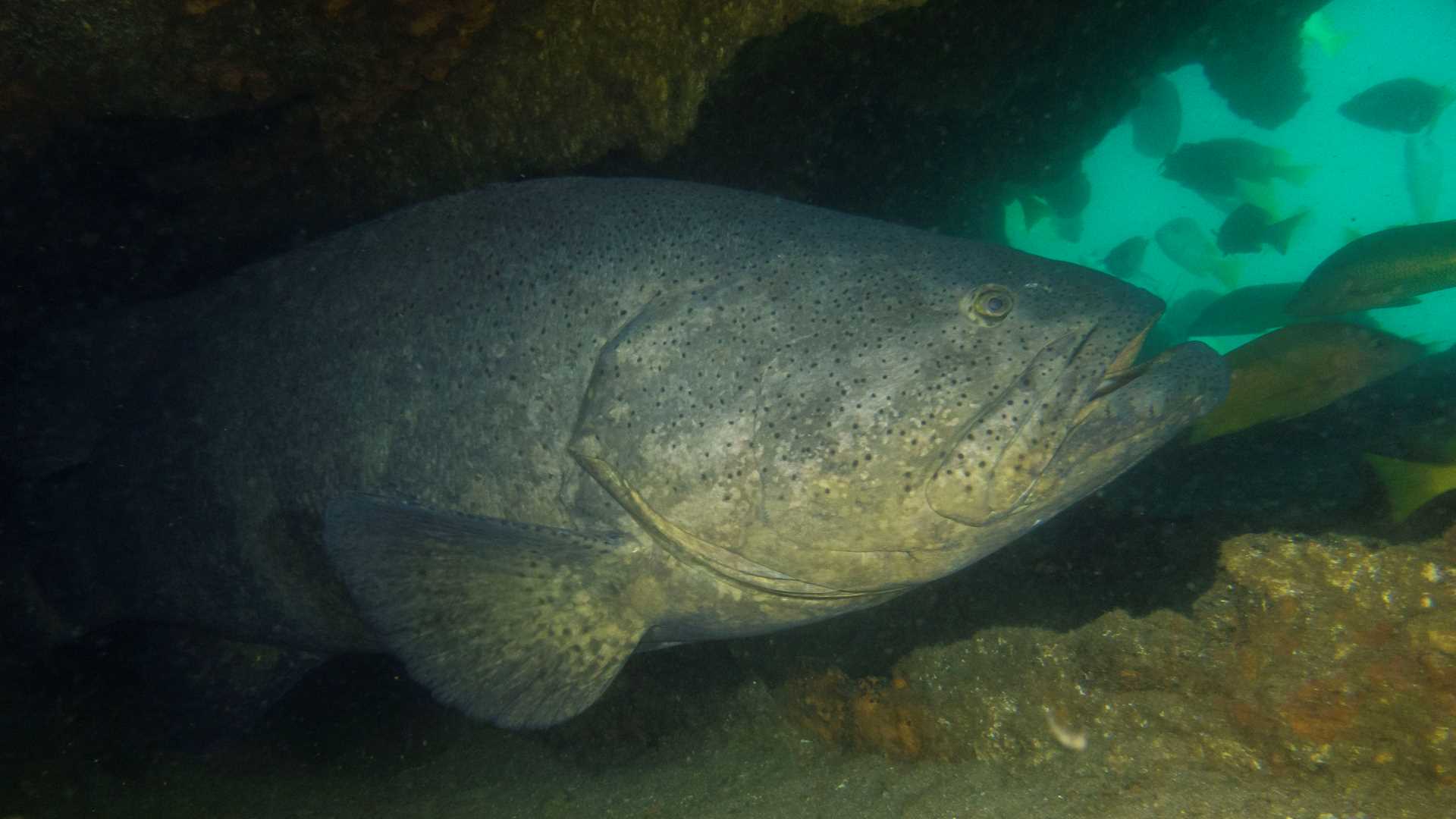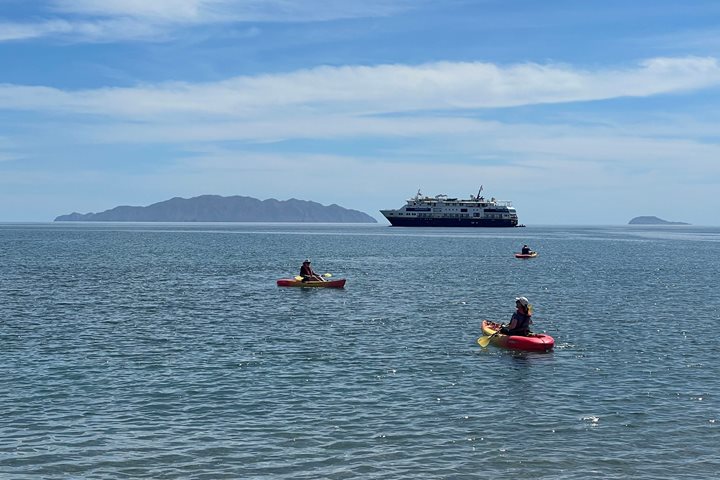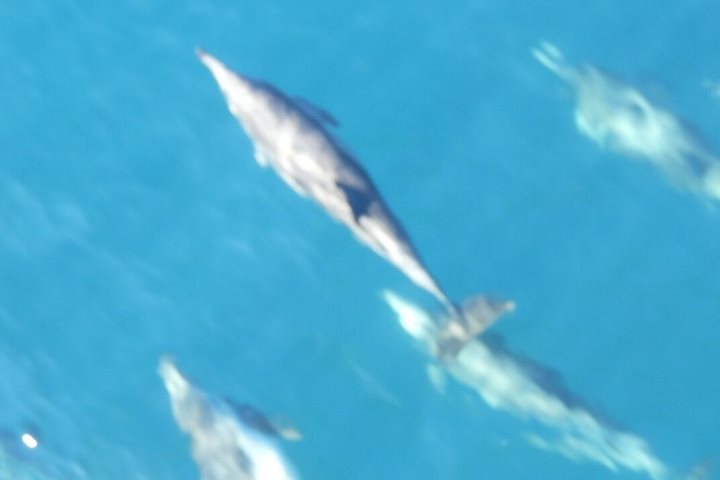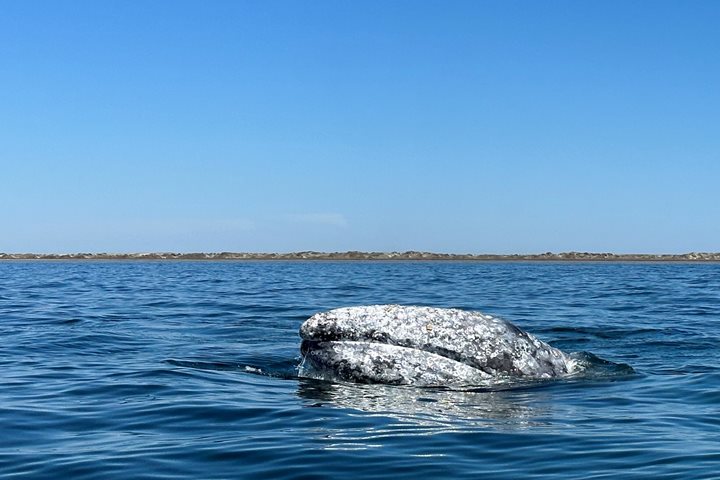The waters around Baja California’s southern tip are very special; the area is just south of the Tropic of Cancer. The air is usually crisp and clean, and this morning was no exception. Conditions were so clear that some early-risers had the chance to witness the elusive and, to many, mythical green flash. As the atmosphere refracted the first rays of the rising sun, guests gasped when they spotted the pure green blip of color. Shortly after sunrise, National Geographic Venture anchored south of Los Frailes. We were located just outside of our morning destination, the beautiful Cabo Pulmo National Park. Cabo Pulmo gained international recognition a few years ago, when researchers monitoring the recovery of fish populations published their findings. The research showed a 463% rebound of fish biomass, the largest rebound of any marine reserve in the world!
We explored the waters of the park by snorkeling or boat ride. James Hyde and I went scuba diving with a certified local dive master to film marine life at deeper parts of the sea. We saw a great abundance of fish species, and some of them formed immense schools. We went diving under a school of bigeye jacks so dense that they completely blocked the sunlight! We brought back underwater video of large schools of yellow snappers, graybar grunts, finescale triggerfishes and more. Large leopard groupers patrolled the schools, including some golden ones. My personal highlight was a single huge goliath grouper living inside a shipwreck! This fish was as long as I am and is the third I have ever seen. Goliath groupers were overfished throughout their range. They recovered in areas like the Florida Keys but remain very scarce in most places. It is essential to protect marine areas like Cabo Pulmo; seeing that big guy today was an encouraging reminder of this.
We dedicated the rest of the day to looking for marine wildlife while we headed toward Land’s End. We watched numerous humpback whales, including several groups of surface-active males chasing each other to gain the favors of a female. Other whales slapped their tails or pectoral fins high in the air, delighting everyone with spectacular breaches. This area is one of the main breeding grounds of humpback whales in the North Pacific, and today we had the pleasure of corroborating this. Eventually, we rounded the southernmost point of the peninsula and entered the open Pacific for more adventures to come. As I write this at night, National Geographic Venture is heading towards Magdalena Bay, where we will continue our great expedition to explore the beauty of Mexico’s Baja California.







